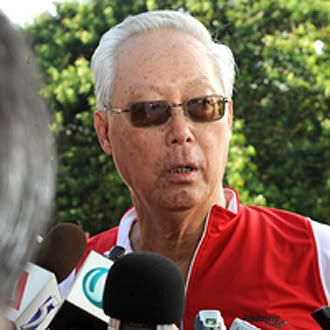Tok so much cok when this is the simple message it's trying to put across!
<TABLE border=0 cellSpacing=0 cellPadding=0 width="100%"><TBODY><TR>Aug 3, 2009
CREDIT CARD FRAUD
</TR><!-- headline one : start --><TR>Customers are the first line of defence
</TR><!-- headline one : end --><!-- show image if available --></TBODY></TABLE>
<!-- START OF : div id="storytext"--><!-- more than 4 paragraphs -->I REFER to various letters in response to the reports, 'Thieves use her credit cards to charge $17,000' (July 13), and 'Credit card stolen? Mind the pitfalls (last Tuesday).
A credit card is a credit facility extended by a bank to a customer. When a customer uses a credit card, the bank agrees to pay the merchant on behalf of the customer, and the customer agrees to pay the bank back. The credit card provides convenience for the customer as he does not need to carry large amounts of cash. At the same time, this means that credit cards should be handled carefully. Hence, both customers and banks have responsibilities.
Although merchants are required to review the signature on the card, in practice, it is easy to forge signatures. Banks therefore demonstrate their responsibility in many other ways.
For example, banks have fraud detection systems to monitor card usage on a real-time basis. Analysts review suspicious transactions and contact customers to verify and validate high-risk or value transactions. That was how letter writer Tan Shock Ling ('Here's what happened', last Friday) discovered her credit card was missing. Sometimes, however, the customer cannot be contacted, particularly if he is overseas. In some cases, the bank then 'blocks' the credit card as a safety measure and asks the customer to validate the transaction.
The first and primary line of defence is still the customer who has custody of the card. It is the customer's responsibility to keep the credit card safe. If the customer leaves the card in a handbag in an unattended car where it might be stolen, then, regrettably, that is negligence. With most banks, card members are liable for transactions effected before the bank is notified of the loss of the card. But where every reasonable precaution has been taken by the card member, including immediately reporting the loss of a card, the card member is not liable for any unauthorised purchases.
The Association of Banks in Singapore will continue to monitor this issue and keep abreast of developments. We encourage prudent behaviour by both customers and banks to prevent credit card fraud.
Ong-Ang Ai Boon (Mrs)
Director
Association of Banks in Singapore
<TABLE border=0 cellSpacing=0 cellPadding=0 width="100%"><TBODY><TR>Aug 3, 2009
CREDIT CARD FRAUD
</TR><!-- headline one : start --><TR>Customers are the first line of defence
</TR><!-- headline one : end --><!-- show image if available --></TBODY></TABLE>
<!-- START OF : div id="storytext"--><!-- more than 4 paragraphs -->I REFER to various letters in response to the reports, 'Thieves use her credit cards to charge $17,000' (July 13), and 'Credit card stolen? Mind the pitfalls (last Tuesday).
A credit card is a credit facility extended by a bank to a customer. When a customer uses a credit card, the bank agrees to pay the merchant on behalf of the customer, and the customer agrees to pay the bank back. The credit card provides convenience for the customer as he does not need to carry large amounts of cash. At the same time, this means that credit cards should be handled carefully. Hence, both customers and banks have responsibilities.
Although merchants are required to review the signature on the card, in practice, it is easy to forge signatures. Banks therefore demonstrate their responsibility in many other ways.
For example, banks have fraud detection systems to monitor card usage on a real-time basis. Analysts review suspicious transactions and contact customers to verify and validate high-risk or value transactions. That was how letter writer Tan Shock Ling ('Here's what happened', last Friday) discovered her credit card was missing. Sometimes, however, the customer cannot be contacted, particularly if he is overseas. In some cases, the bank then 'blocks' the credit card as a safety measure and asks the customer to validate the transaction.
The first and primary line of defence is still the customer who has custody of the card. It is the customer's responsibility to keep the credit card safe. If the customer leaves the card in a handbag in an unattended car where it might be stolen, then, regrettably, that is negligence. With most banks, card members are liable for transactions effected before the bank is notified of the loss of the card. But where every reasonable precaution has been taken by the card member, including immediately reporting the loss of a card, the card member is not liable for any unauthorised purchases.
The Association of Banks in Singapore will continue to monitor this issue and keep abreast of developments. We encourage prudent behaviour by both customers and banks to prevent credit card fraud.
Ong-Ang Ai Boon (Mrs)
Director
Association of Banks in Singapore


